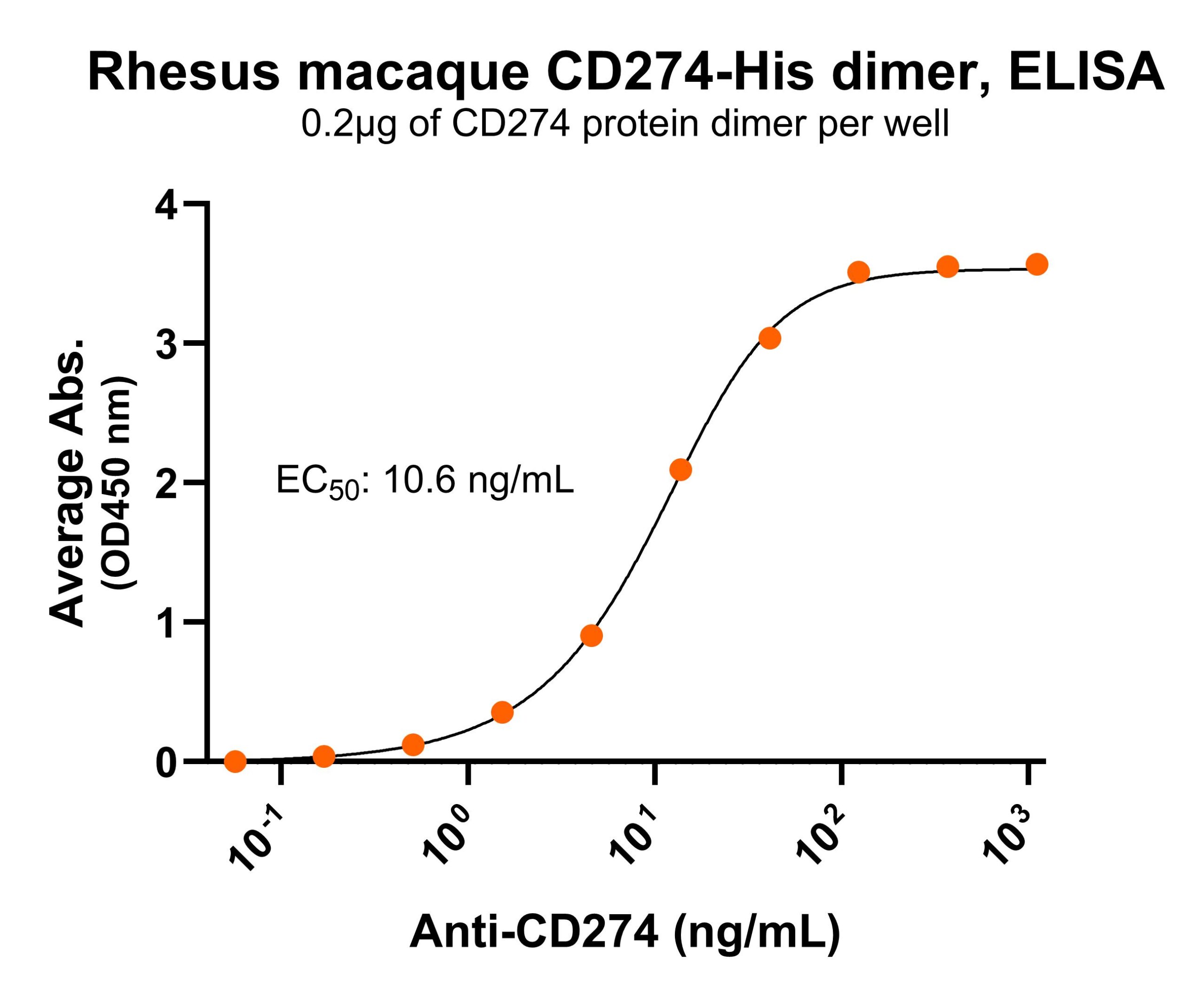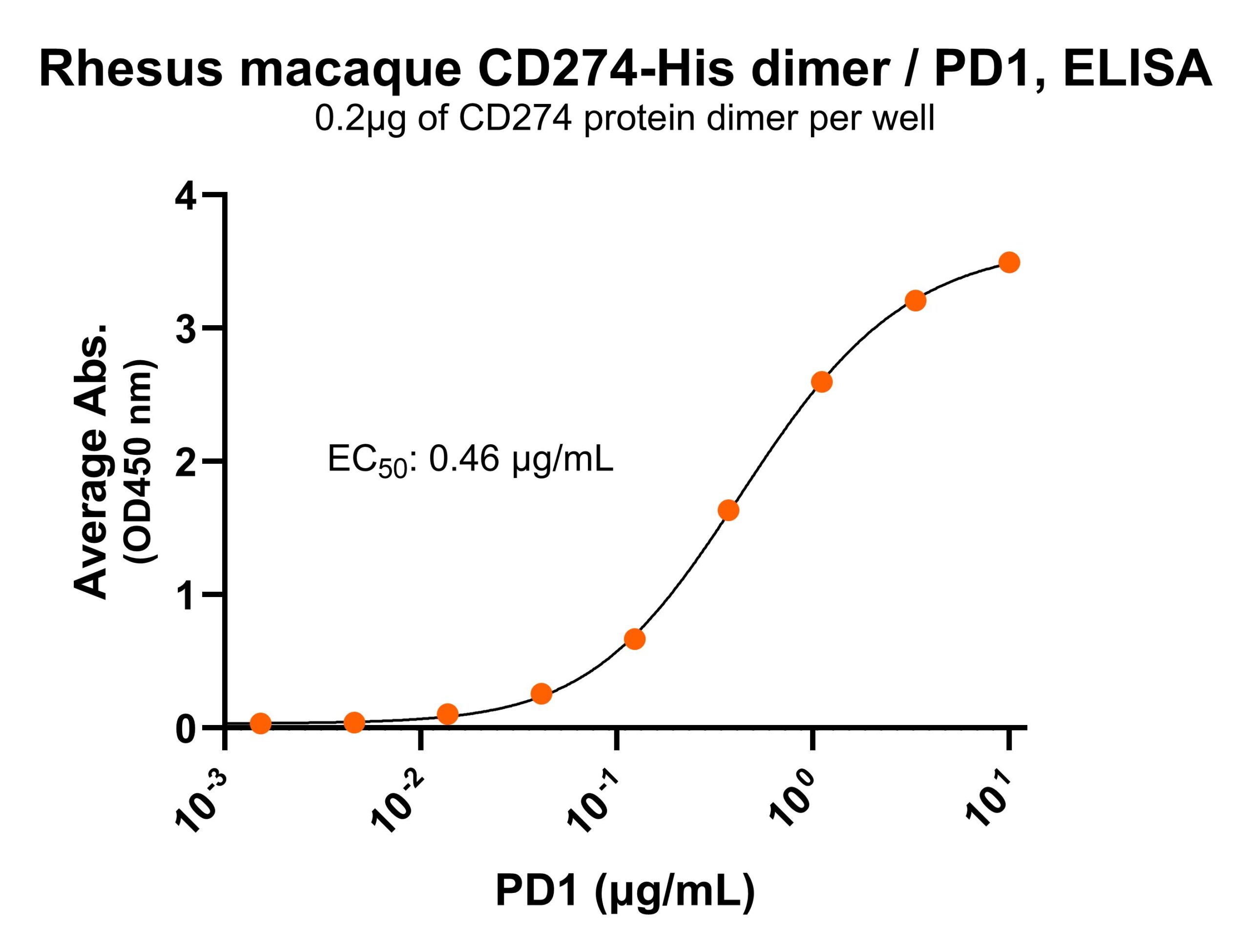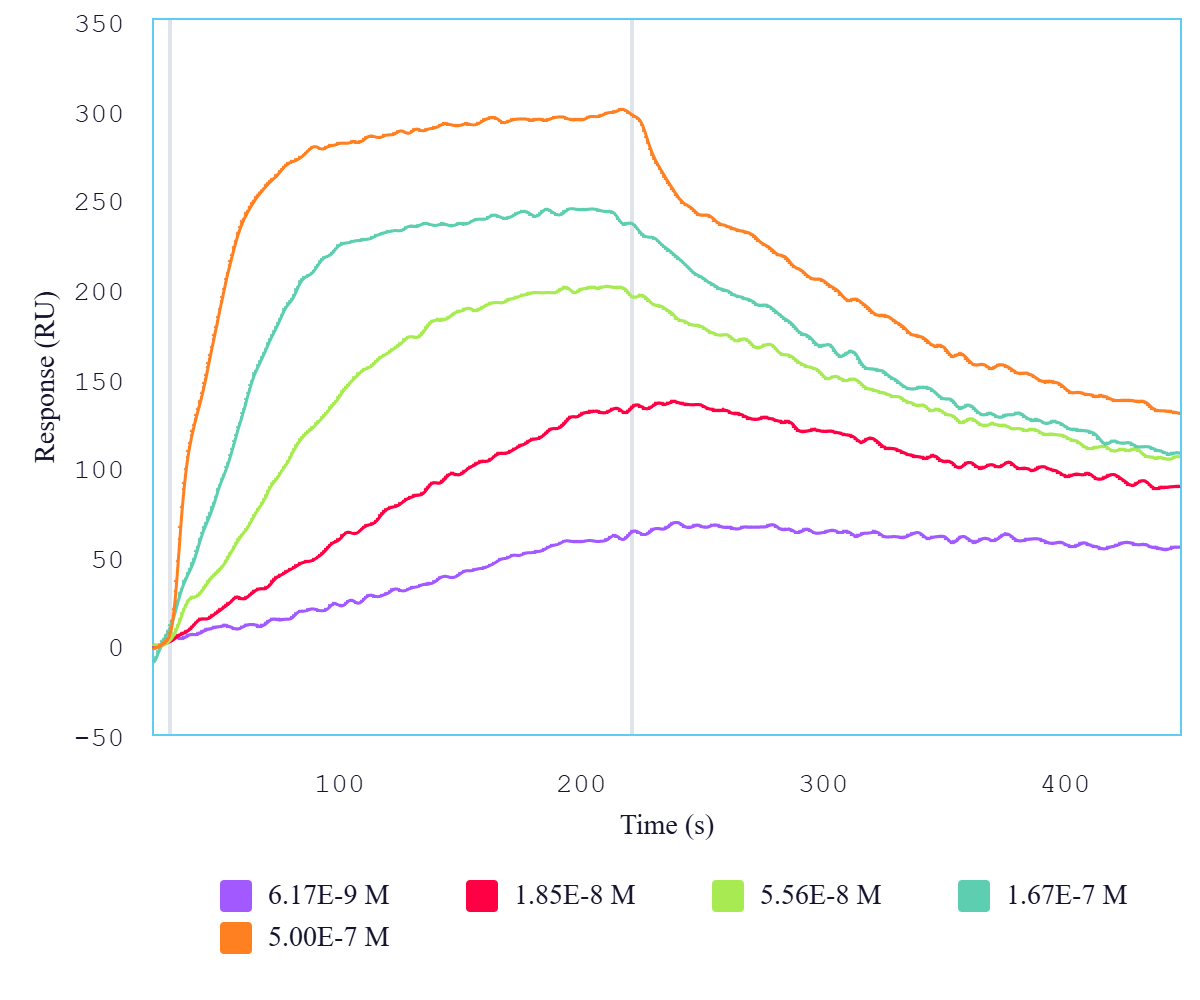 MW: Molecular Weight marker reduced condition
NR: CD274 dimer under non-reduced condition
MW: Molecular Weight marker reduced condition
NR: CD274 dimer under non-reduced condition Immobilized Rhesus macaque CD274 protein dimer
Immobilized Rhesus macaque CD274 protein dimer His Tag (CSP-25292-01) at 2 μg/mL (100 μL/well) can bind anti-human CD274 polyclonal antibody with half maximal effective concentration (EC50) range of 5.3-21.2 ng/mL (QC tested).
His Tag (CSP-25292-01) at 2 μg/mL (100 μL/well) can bind anti-human CD274 polyclonal antibody with half maximal effective concentration (EC50) range of 5.3-21.2 ng/mL (QC tested). Immobilized Rhesus macaque CD274 protein dimer
Immobilized Rhesus macaque CD274 protein dimerFor Research Use Only (RUO)